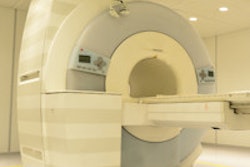Medical imaging radiation once again made the list of the ECRI Institute's top 10 rankings of technology hazards for 2013. But this year, the nonprofit group expanded the category from just CT to include a broader range of imaging-related radiation hazards.
Even so, "unnecessary exposures and radiation burns from diagnostic radiology procedures" slipped to third place overall this year from second in ECRI's 2012 list. Meanwhile, concerns over dangers from radiation therapy, which was the top hazard on the 2011 list and also appeared in 2012, was not to be found in the 2013 iteration.
No. 1 health threat
The dubious honor of No. 1 health technology threat for 2013 went to those rapidly proliferating medical alarms for the second year in a row, while infusion pumps, which includes contrast injectors in radiology, moved up to the No. 2 spot formerly occupied by CT scans.
Several of ECRI's other top 10 threats were also inseparable from radiology; for example, this year's No. 4 item, "patient/data mismatches in EHRs and other health IT systems," and the No. 5 hazard, "interoperability failures with medical devices and health IT systems."
Meanwhile, hazard No. 7 broaches a threat that radiology has invested enormous resources in but not quite tamed: "inattention to the needs of pediatric patients when using 'adult' technologies." Finally, caregiver distractions from mobile devices weighed in at No. 9, speaking like several of the other hazards to a world that is at once overconnected and underfocused on the task at hand.
The top 10 medical hazards for 2013 are below, followed by summaries of those affecting radiology:
- Alarm hazards
- Medication administration errors using infusion pumps
- Unnecessary exposures and radiation burns from diagnostic radiology procedures
- Patient/data mismatches in EHRs and other health IT systems
- Interoperability failures with medical devices and health IT systems
- Air embolism hazards
- Inattention to the needs of pediatric patients when using "adult" technologies
- Inadequate reprocessing of endoscopic devices and surgical instruments
- Caregiver distractions from smartphones and other mobile devices
- Surgical fires
Radiation
In its analysis of radiation-related risks, the ECRI report acknowledged that acute burns and other emergencies from medical imaging devices are quite rare, and that the more common concern is that radiation exposure increases the patient's risk of eventually developing cancer, a risk that can only be controlled, not eliminated.
"But controlling the risks can become more complicated -- and more crucial -- as technologies advance," the report states.
Along with dramatically increased imaging capabilities often comes greater radiation doses, higher cumulative doses for patients, and more frequent procedures.
"The advanced capabilities of these technologies may lead to their increased use, resulting in a higher cumulative dose that a patient might receive," the authors wrote. "With so many factors pushing toward higher cumulative doses, concentrated efforts are required to reduce unnecessary radiation exposures whenever possible."
Certainly those efforts are being made in radiology, but the report emphasizes the need to answer several basic questions before using any radiation-bearing exam, including the following:
- Is the appropriate test being ordered?
- Have acceptable images already been acquired recently, making a new scan unnecessary?
- Are technologists using the ALARA (as low as reasonably achievable) principle to minimize exposure?
- Are technologists careful to avoid scanning regions beyond the anatomy of interest?
- Are skin dose levels being tracked throughout the procedure?
ECRI authors noted the importance of the Image Wisely campaign to reduce radiation exposure, with guidelines highlighting the need for attention to adequate staffing levels, validation and monitoring of dose protocols for appropriateness, the use of software to record and track radiation doses, and research into dose-mitigation technologies.
Data mismatches
Mismatches between patients and data can certainly be a source of trouble in a radiology practice, and cases in which a patient's information ends up in another patient's electronic medical record are a well-known phenomenon. In electronic health records, such errors can be more difficult to detect than in other systems, ECRI wrote.
Perhaps most troubling, some of the capabilities that make health IT systems powerful -- like their ability to collect and transmit data from multiple devices and systems -- "can serve to multiply the effects of such errors to a degree that would have been unlikely in a paper-based system," they wrote. "The result is that such errors can have far-reaching consequences, leading to a host of downstream effects that can be difficult to both identify and correct."
Medical devices and systems themselves, as well as workflow, can determine whether data are associated with the wrong patient. For example, a location-centric application can be fooled if the patient is moved to another room without the record being updated. So called patient-centric approaches are preferred.
A radiation oncology scenario where a patient is treated with another patient's protocol is among the most troubling scenarios. Other potential problems include software that aggregates data from different systems, incorrectly matching patient data, or a software flaw that allows images from one patient to be placed in another patient's study, the group wrote.
Interoperability failures
"Interoperability failures with medical devices and health IT systems," hazard No. 5, is another consequence of the rapid pace of technological innovation being pursued by different firms whose products aren't always as compatible as they're designed to be, the ECRI authors wrote.
As radiologists know, interfaces between medical devices don't always work as intended. In its testing, ECRI found that most of the interfaces didn't function as designed, and some even allowed dangerous conditions to exist; for example, a ventilation monitor that failed to warn caregivers of a patient circuit disconnection.
The report advised that centers maintain an inventory of interfaced devices, including all software versions and configurations of the various interfaced components. Assess the risks to look for potential sources of failure, and maintain new software versions as they are supplied by the manufacturer, the authors wrote.
Adapting adult-sized imaging to children
For hazard No. 7, the report warns that radiation dose settings designed for adults are usually inappropriate for children.
"The use of such settings exposes young, still-developing patients to excessive radiation -- a significant concern because radiation-linked cancer risks are higher for pediatric patients," the authors wrote.
Radiation-bearing exams should be approached differently in children versus adults and should be evaluated to minimize the risk of harm, they wrote. One hospital lauded by ECRI put evidence-based indicators for scanning within the x-ray order process, streamlining and reducing the use of imaging exams.
Meanwhile, the Image Gently campaign to promote radiation protection in the imaging of children is a key resource for managing the imaging of pediatric patients, ECRI noted.
"Consider identifying a pediatric technology safety coordinator or champion to assess the technologies that are used on pediatric patients at your facility and to identify any associated risks," the authors wrote.
Distractions from devices
Health hazard No. 9, "caregiver distractions from smartphones and other mobile devices," cites a variety of potential problems associated with the use of today's array of high-tech personal tools.
For starters, it's very easy to expose private patient information, exposing the healthcare facility to potentially expensive and damaging security breaches.
"While the need for clinicians to multitask is nothing new -- interruptions from pagers and other communication devices have long been a part of the job -- smartphones and other mobile devices now make it easier for clinicians to be interrupted for nonwork-related reasons," they wrote.
And the devices make it easier for physicians to create their own interruptions. A 2012 survey in OR Manger found that 41% of the 112 respondents reported being distracted by a mobile device during patient care, and six respondents reported that distraction from a mobile device may have been linked to an adverse event during a procedure.
Even when situations aren't life-threatening, caregivers focusing on a screen rather than the patient may miss important clues, they wrote.
Among its recommendations, the ECRI report recommends educating staff members and independent physicians about the risks associated with the use of smartphones and similar devices, as well as the potential dangers of distractions from them. Facilities should develop a mobile device management strategy to protect patients, and even consider restricting their use in some instances.



















